I have visited Broadgate and its sculptures in an earlier blog and I went back again last weekend to photograph some more.
First up is Rush Hour, a patinated bronze by George Segal (1982) situated in the Broadgate Circle (EC2M 2QS) …
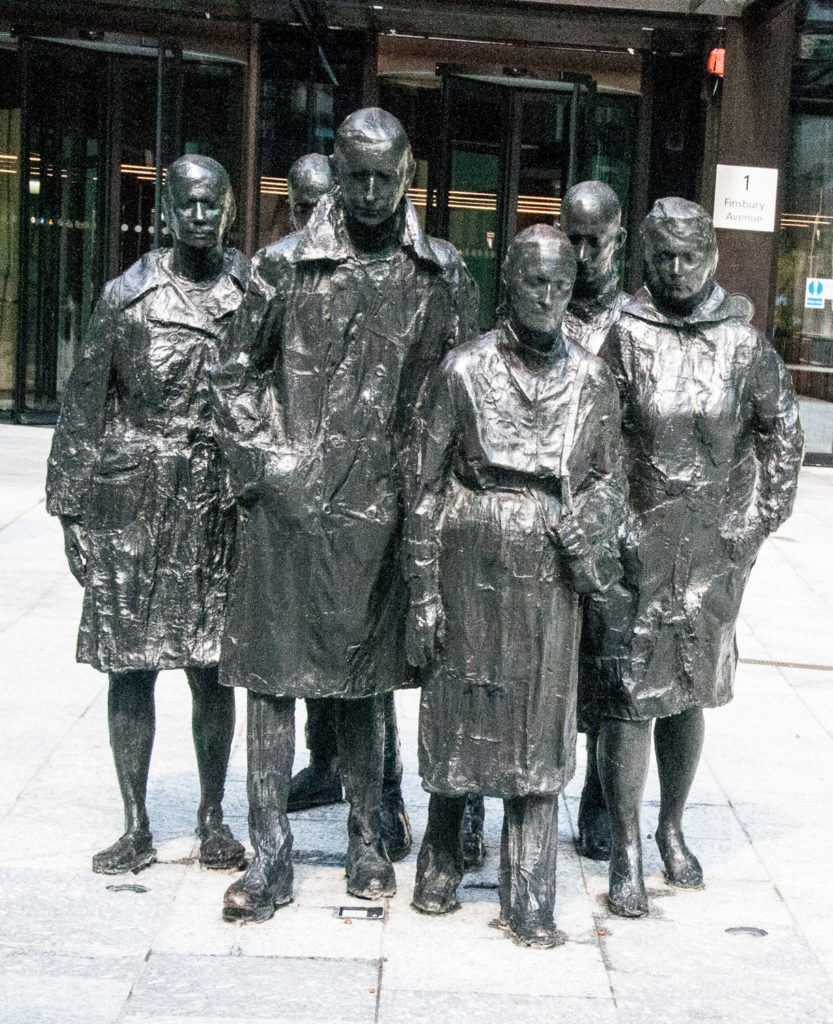
We’ve all been there, haven’t we, heads down, not exactly rushing to get to the office. Or maybe just starting the long slog home on a rainy day (knowing there are train cancellations on our line).
Segal was renowned for casting his figures directly from life – usually friends and family – using plaster bandages to create human scale moulds from which his bronze sculptures could be cast. As a result, all the figures have their eyes closed …
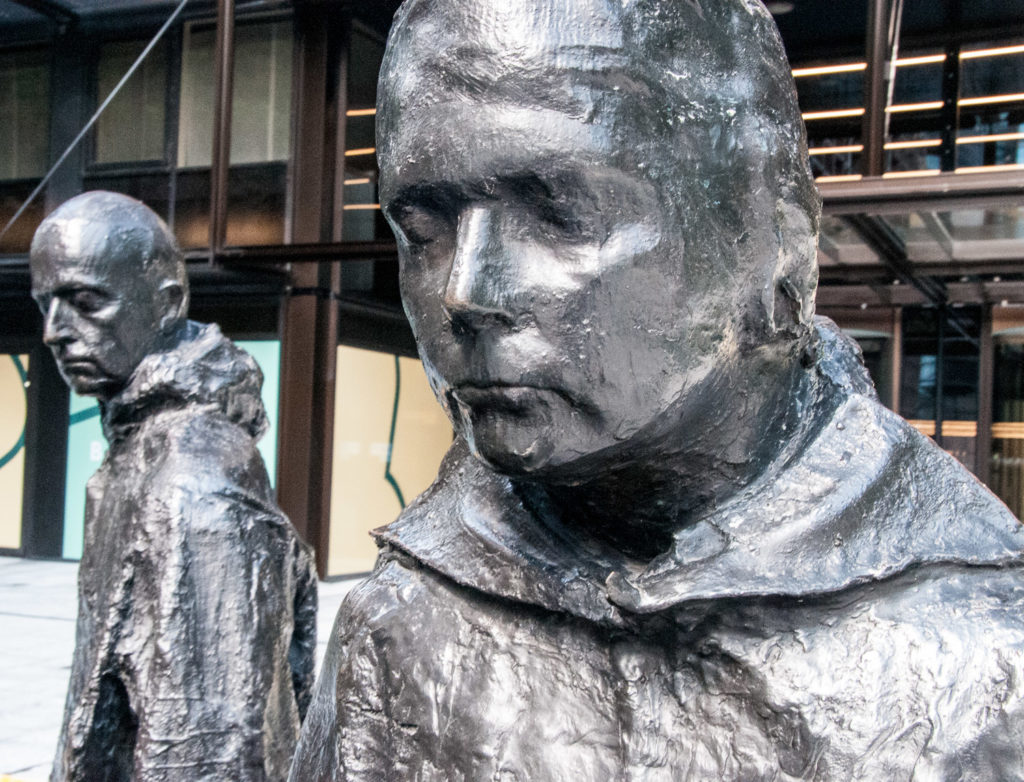
This is Cascade in Exchange Square (EC2A 2EH). It was created by Skidmore, Owings and Merrill (whose Chicago office designed much of Broadgate) and Stephen Cox RA (1991) …
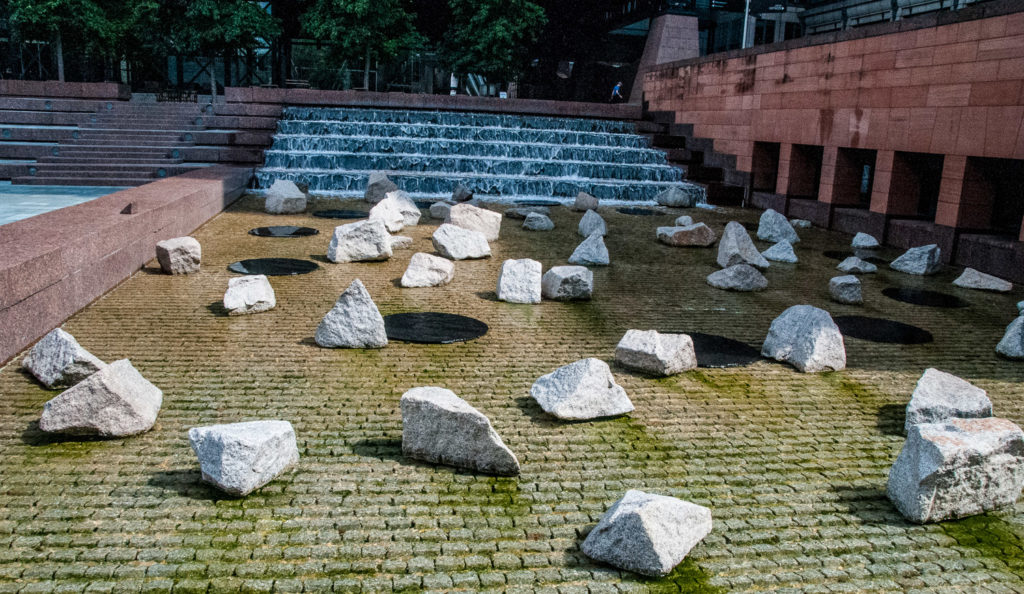
‘Energising and restorative, this water cascade creates a natural oasis within Exchange Square. Calmed within the basin, the water develops circles of stillness around the enduring Indian granite stones, placed at measured intervals as if to signify the passage of time. The perfect place to pause and reflect on the day’s events’. Or maybe a place to chill out after a really horrific commute.
On Finsbury Avenue (EC2M 2PA) you will find Bellerophon Taming Pegasus by Jacques Lipchitz (1966) …
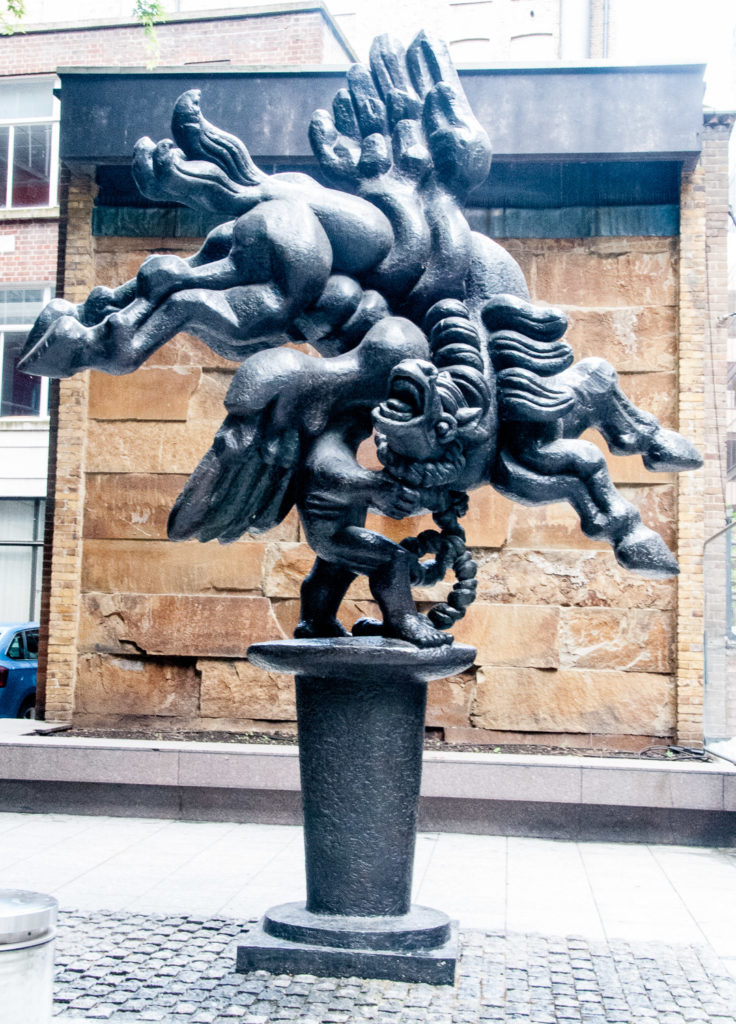
A half-size cast of Lipchitz’s final sculpture (which resides in Columbia University, New York), this is a representation of the epic moment in which Greek hero Bellerophon tames the winged horse Pegasus. This tangle seems to balance rather precariously on its pedestal with hooves, wings and tail radiating in all directions. For Lipchitz, this work demonstrated the ultimate dominance of man over nature, stating ‘You observe nature, make conclusions, and from these you make rules’.
On Broadgate Plaza (EC2M 3AB), Ganapathi and Devi (1988) is another work by Stephen Cox. Apart-yet-together, Ganapathi and Devi alludes to sculptural torsos and ancient themes; Devi refers to the female Hindu goddess, while Ganapathi is the Tamil name for Ganesha, the popular elephant god. Fusing power and sensuality, the stones combine historical and contempoary references, from the quarry to the executed forms …
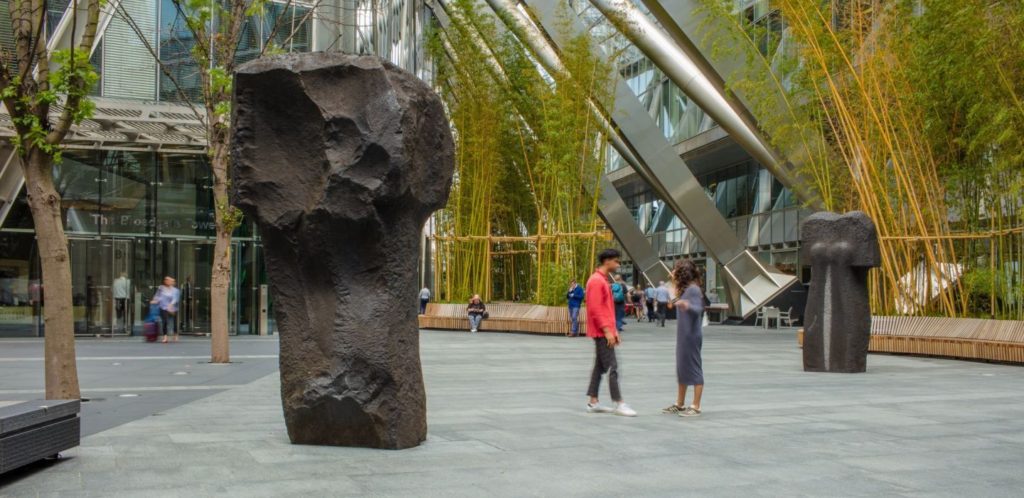
The stone was sourced from the quarries of Mahabalipuram in Tamil Nadu, India …
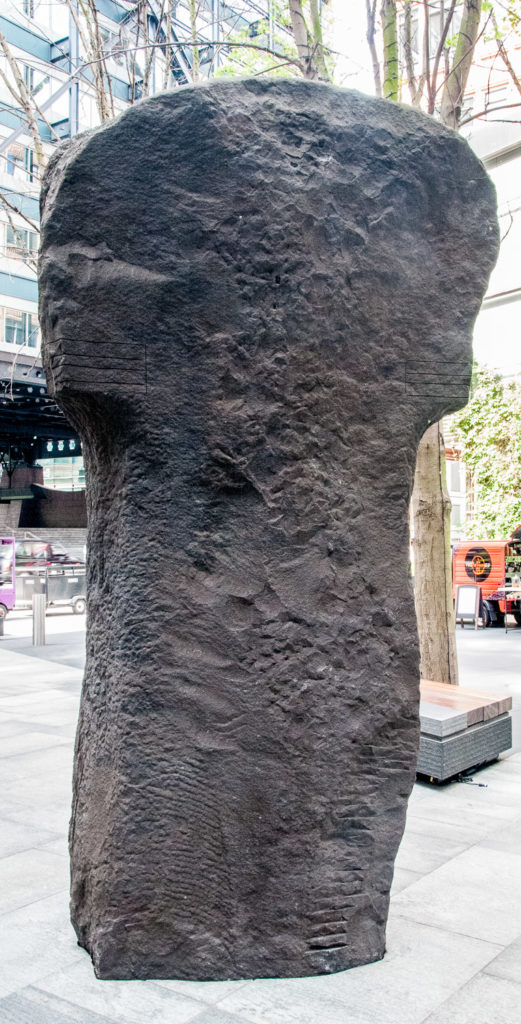
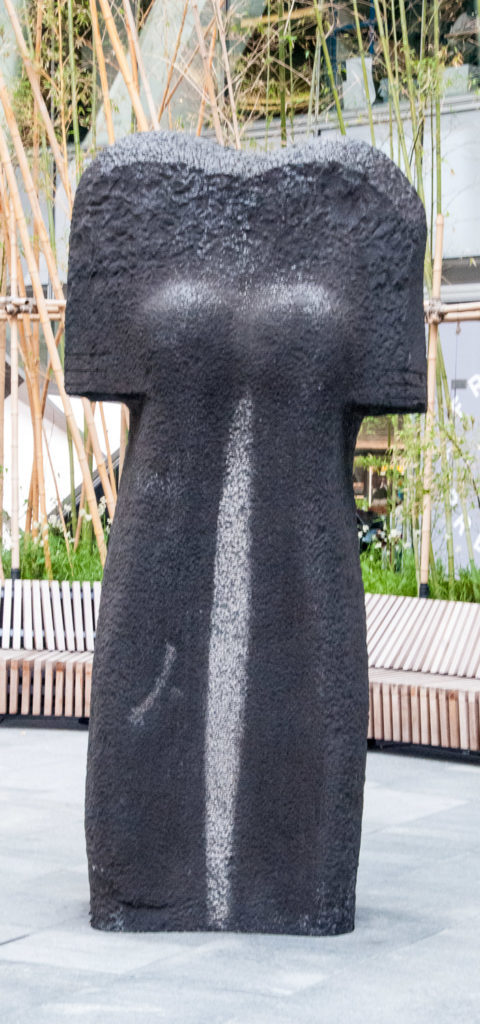
Peering through the entrance to 155 Bishopsgate I spotted this spectacular piece of art (EC2M 3YD) …
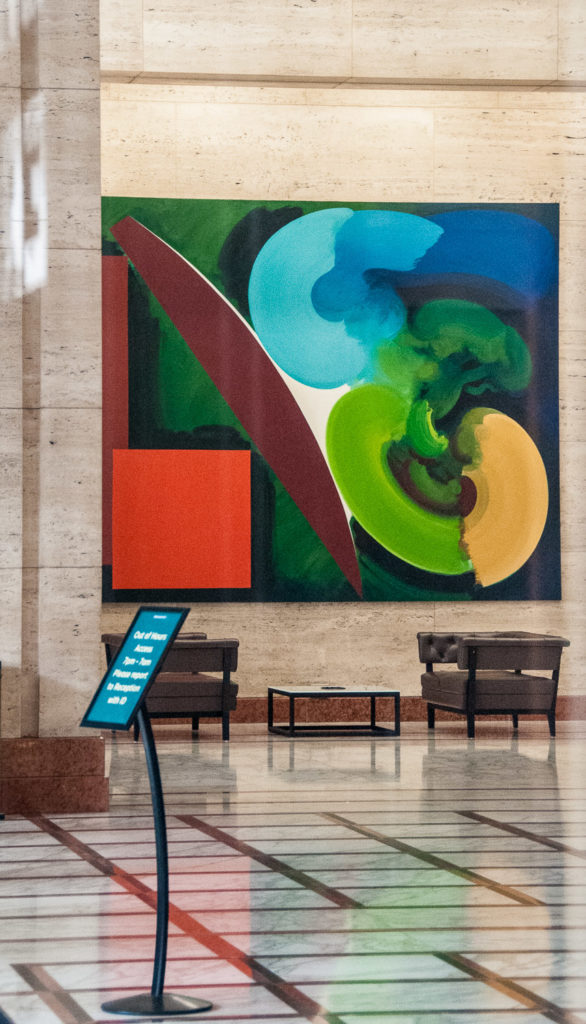
It’s The Mechanics Institute II (1991) by William Tillyer. The notes say: ‘A carefully balanced composition of architecture, cloud, sky and foliage, Tillyer represents the notion of man’s presence via geometric patterns while the contrasting colours suggest the force of natural elements (flashes of warm sun, rushes of air currents, dappled blue light and gentle sea tides)’. The foyer is marketed to movie makers looking for locations as ‘a New York style atrium space’ and it certainly looks the part.
I wandered away from Broadgate, a hundred yards or so north up Bishopsgate, and came across Principal Place (EC2A 2BA) along with this interesting work entitled In Anticipation by James Burke (2018). Do have a look at the website.
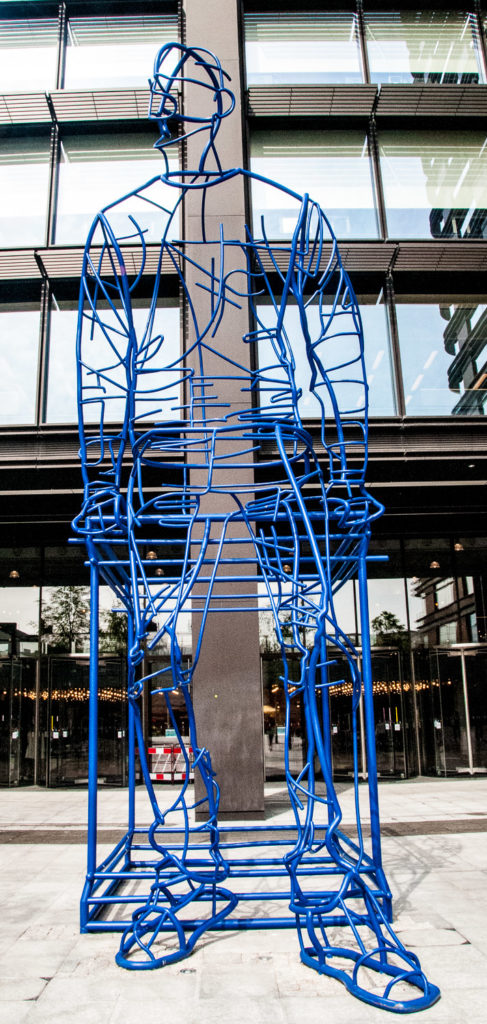
Meanwhile, back in Broadgate, Venus still gazes skywards …
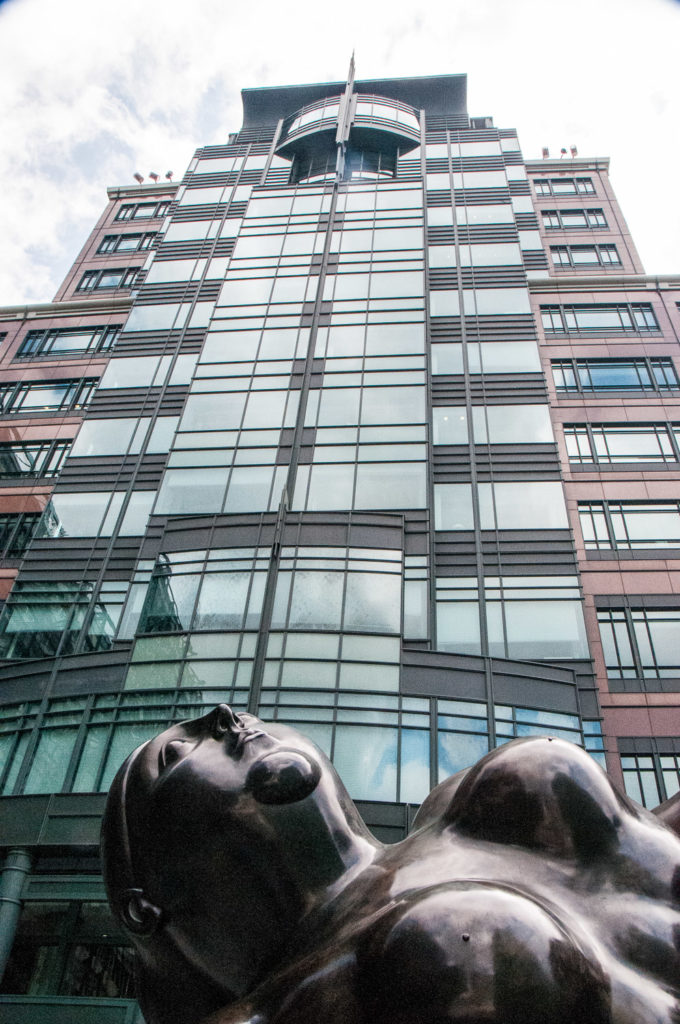
Read more about her and other sculptures here.
